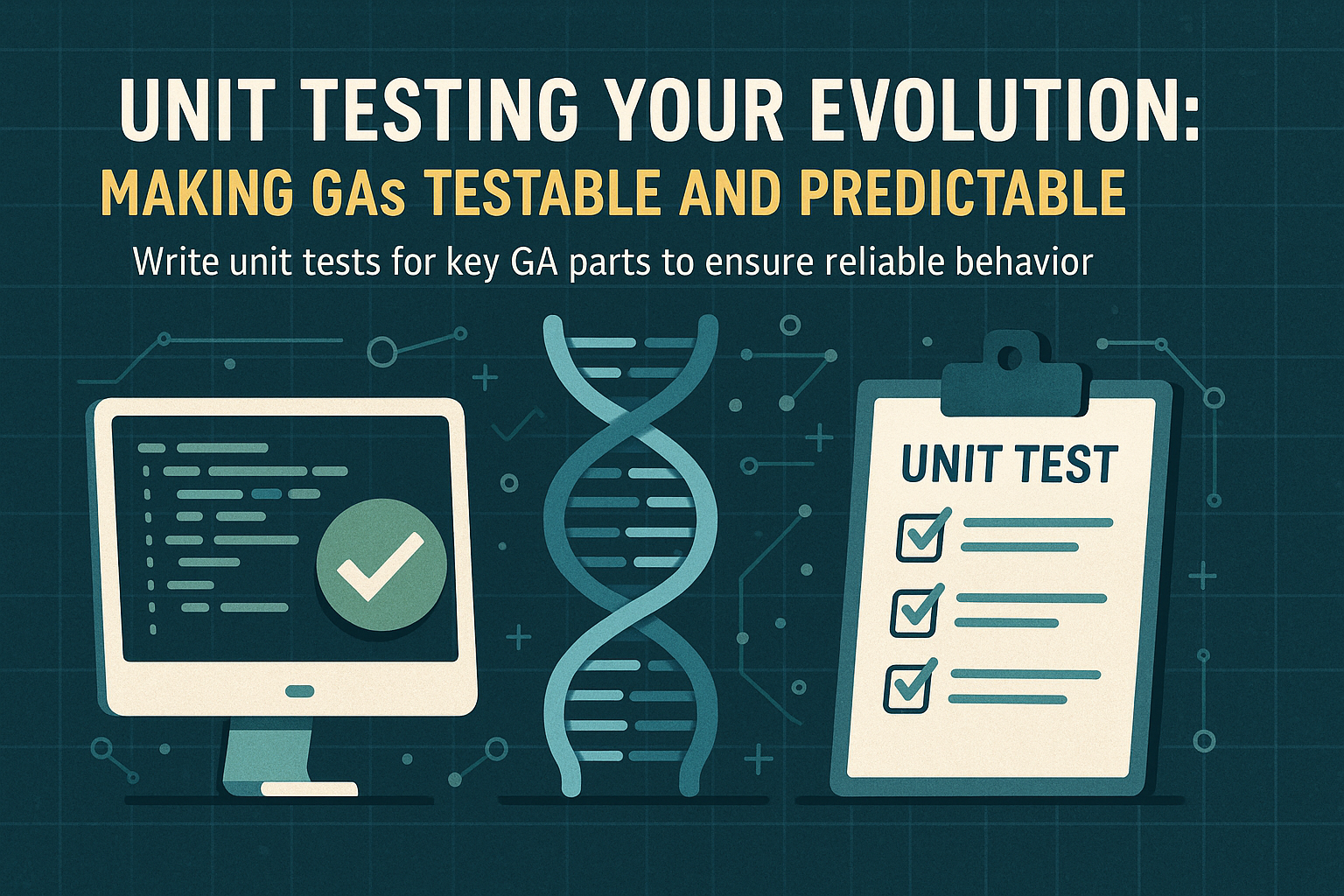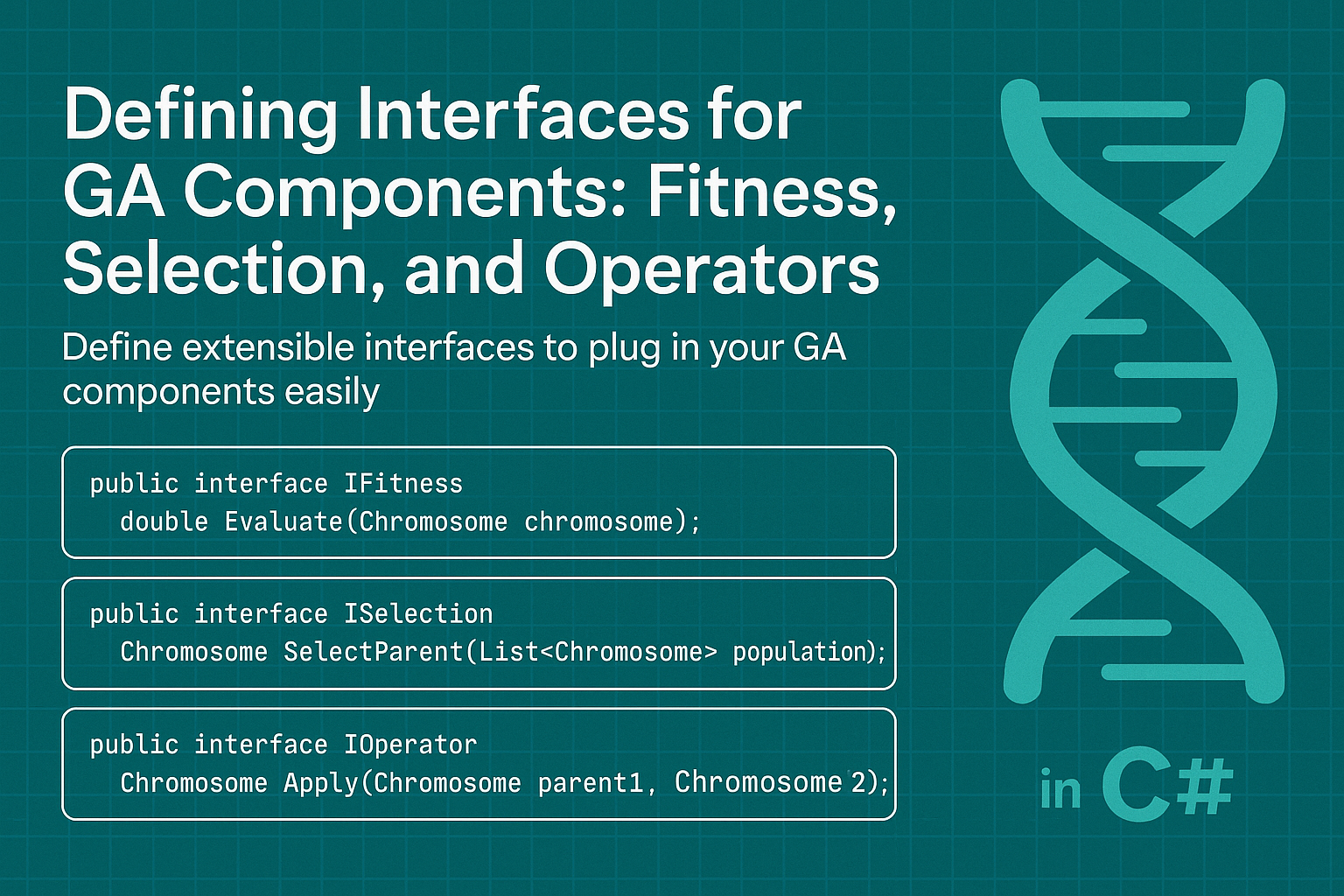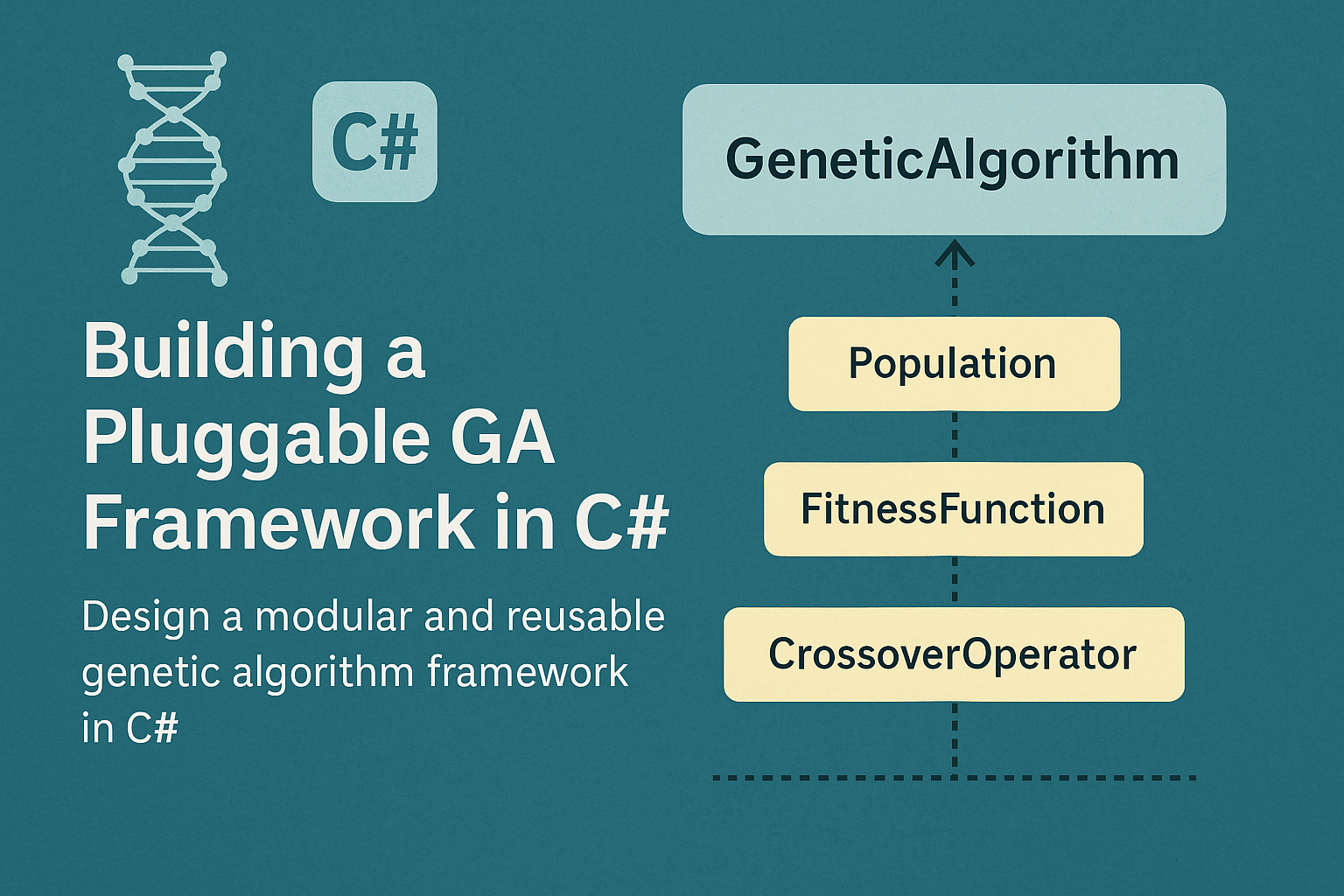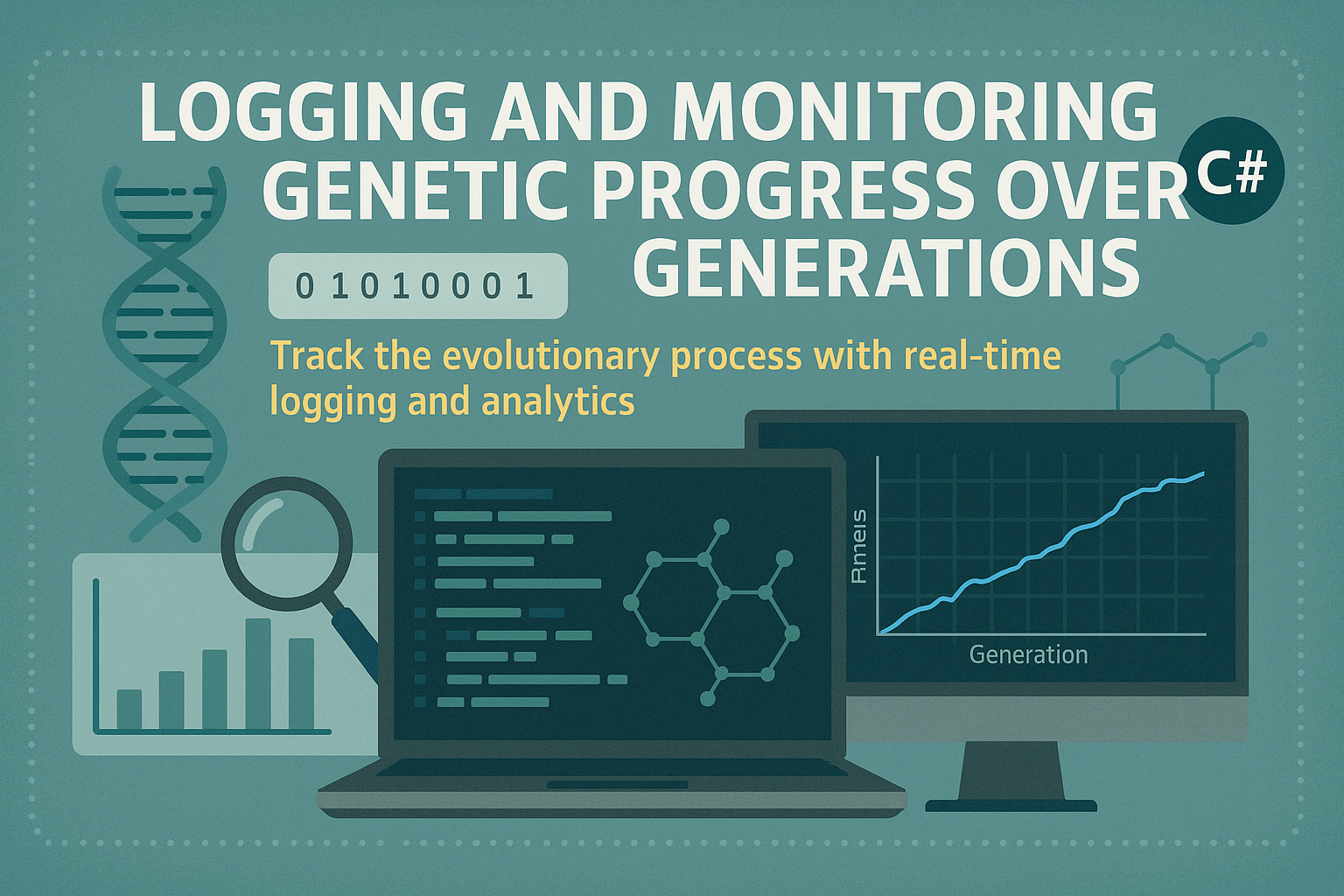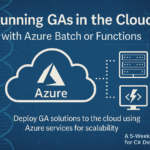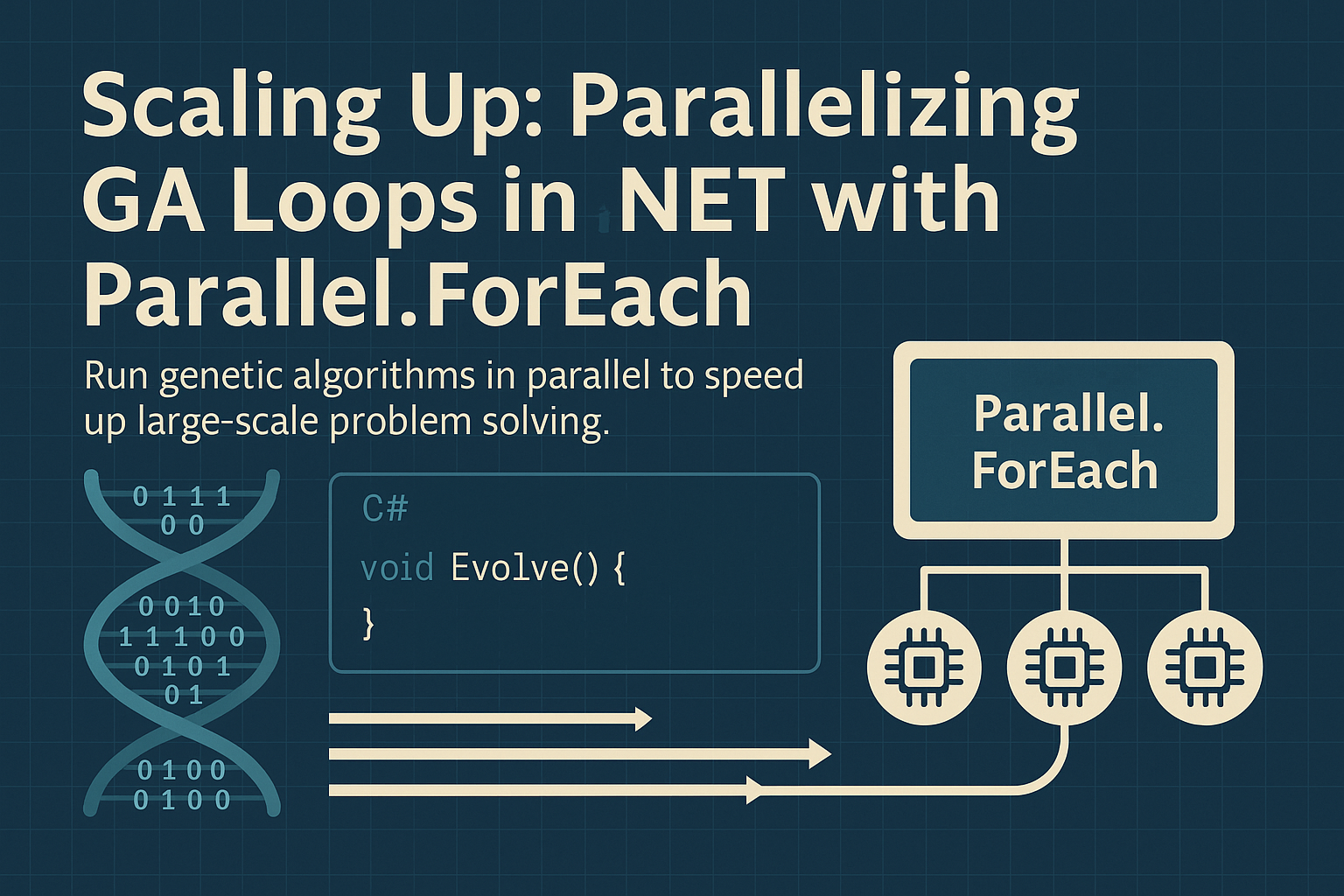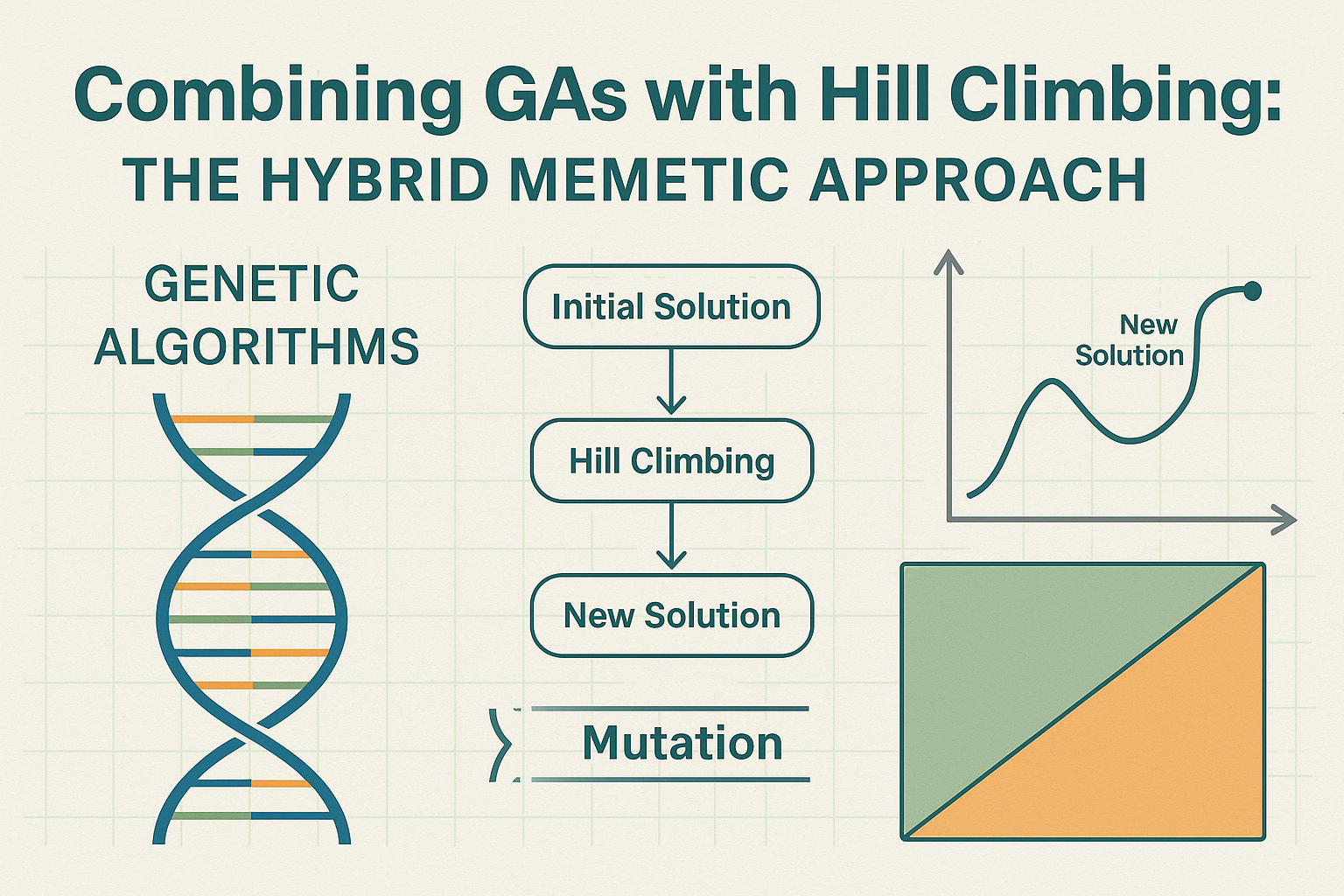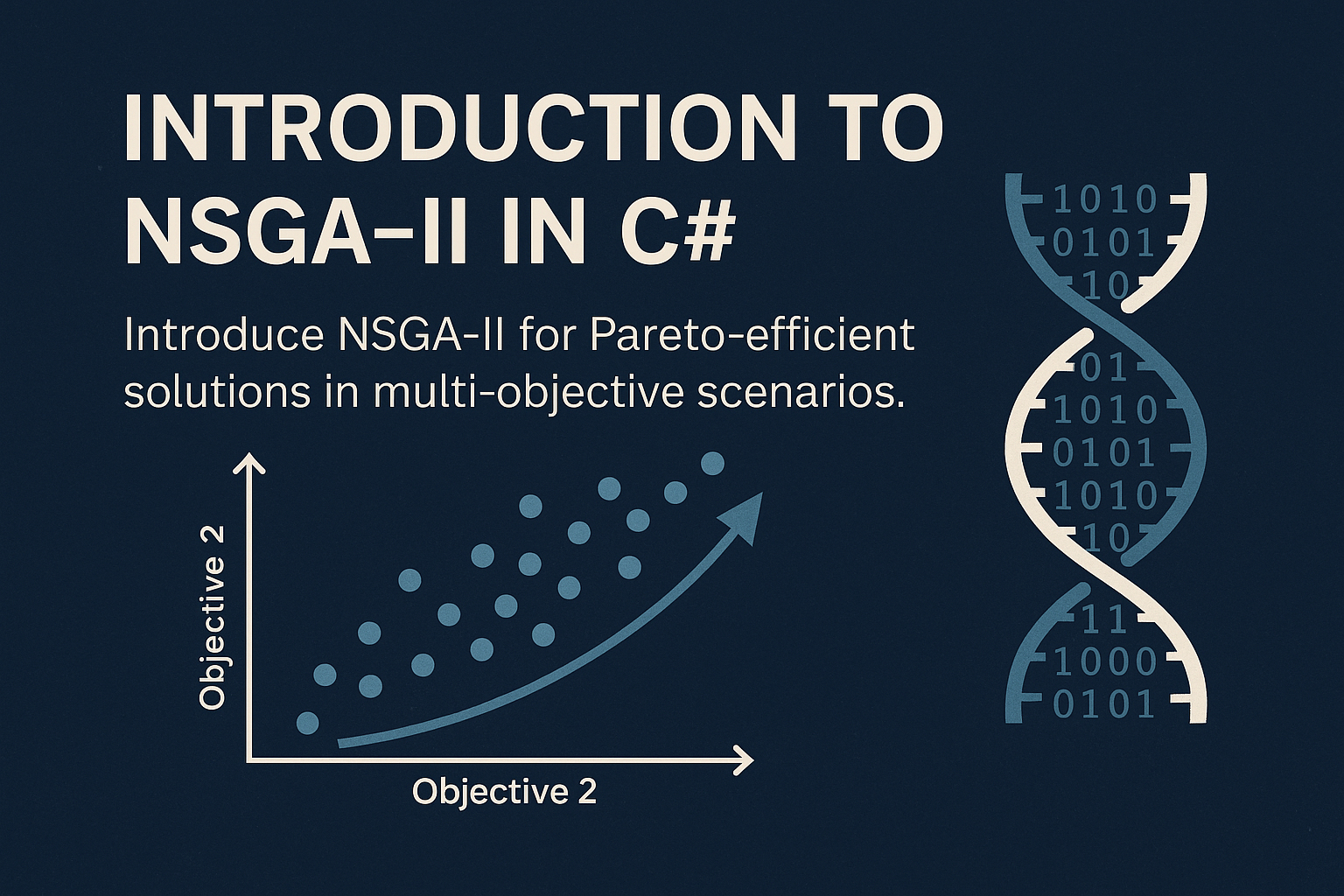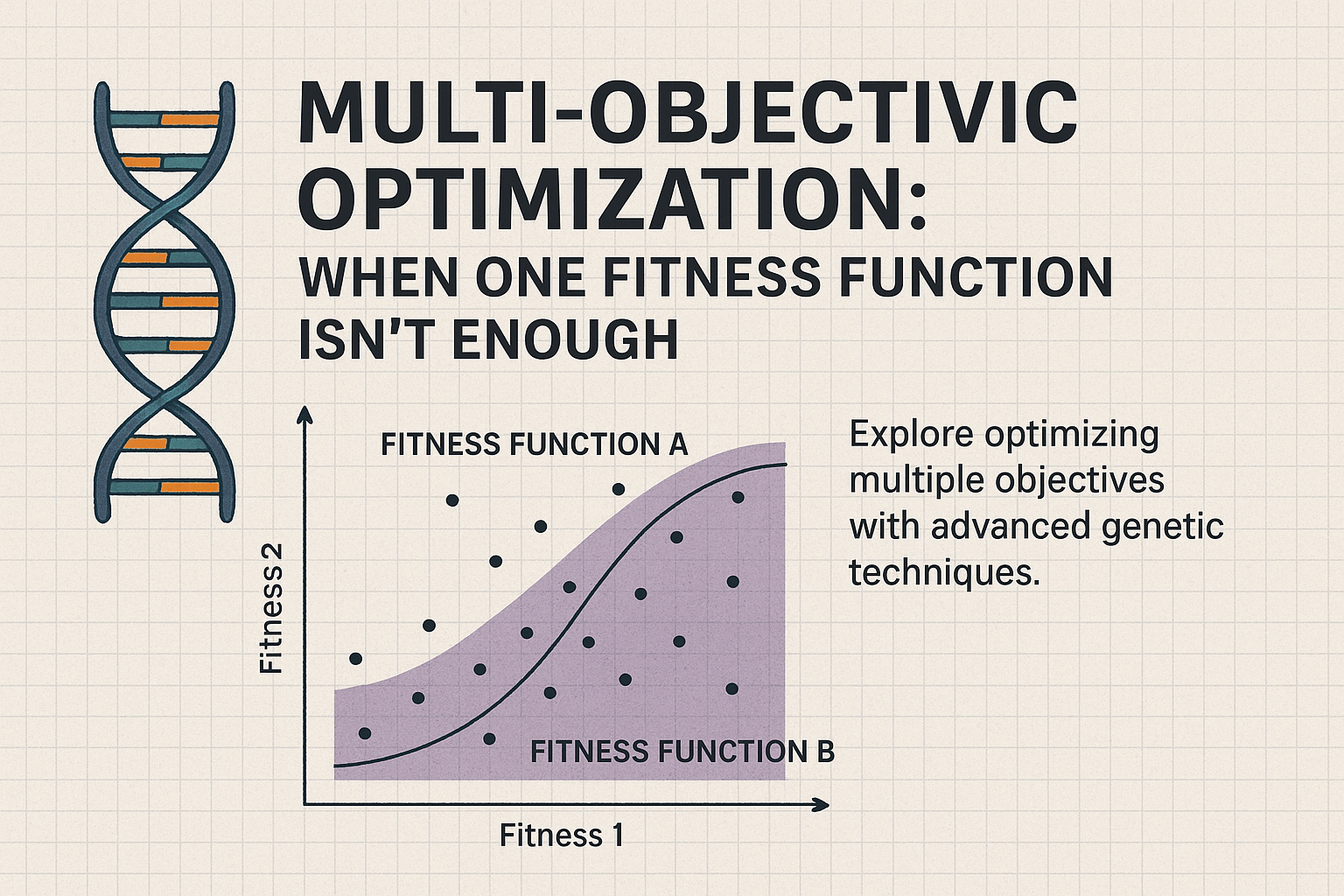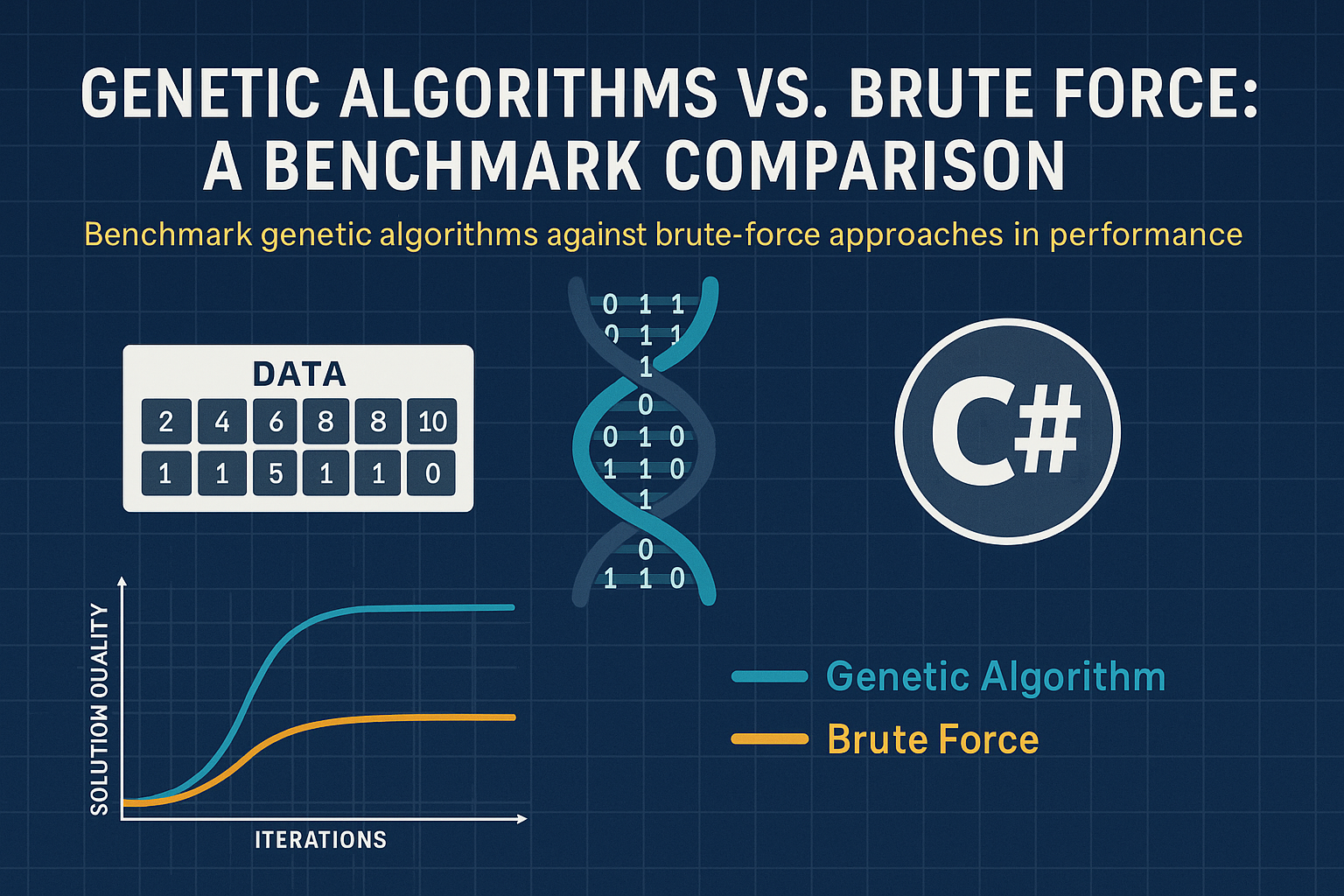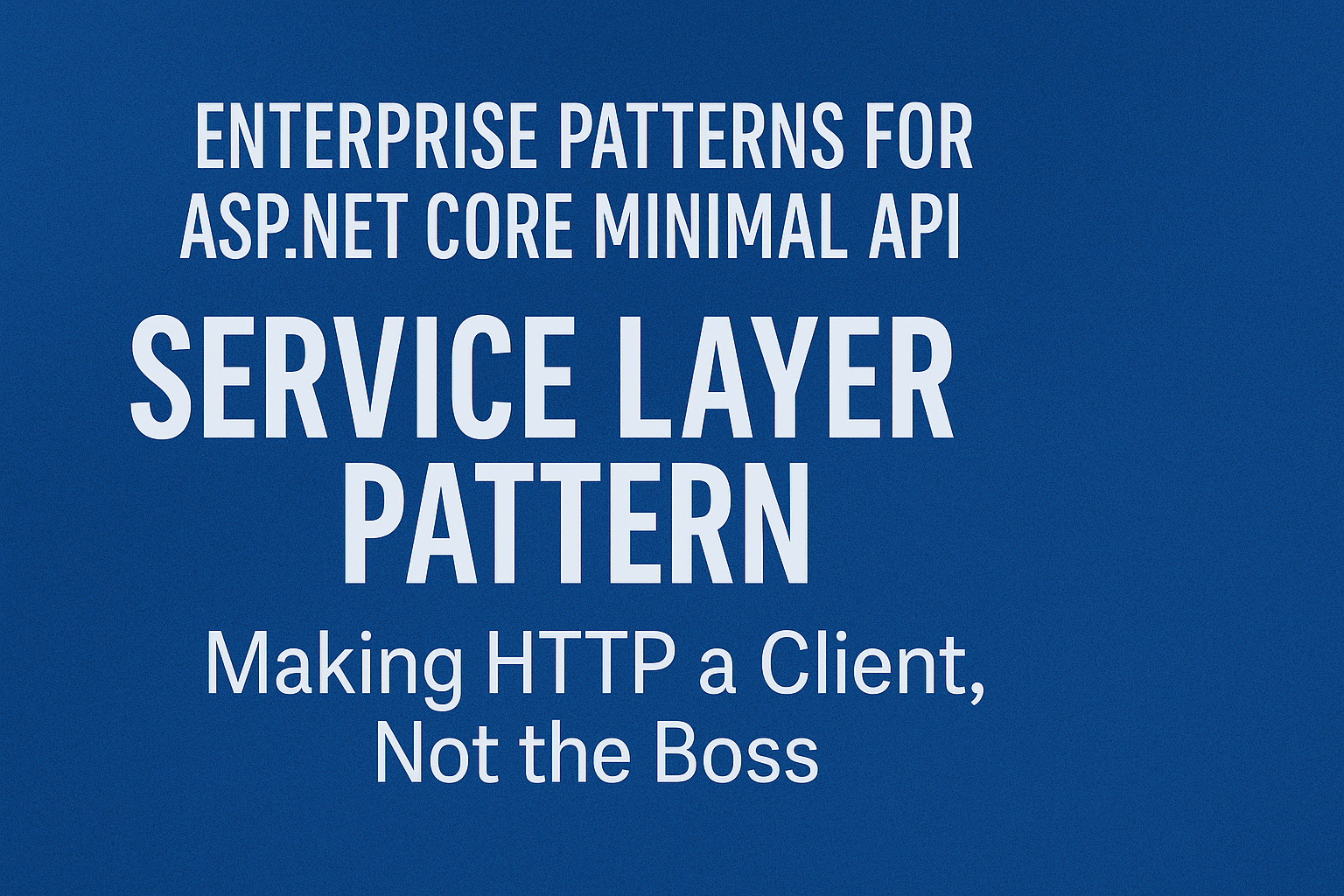Day 30: Unit Testing Your Evolution: Making Genetic Algorithms Testable and Predictable
Genetic Algorithms are inherently stochastic. Mutation introduces randomness. Crossover combines genes in unpredictable ways. Selection strategies often rely on probabilities. While this is essential to their power, it presents a challenge when it comes to unit testing. How can you reliably test behavior when the outcome changes on every run? The answer lies in isolating deterministic logic and controlling randomness …
Continue Reading
Day 29: Defining Interfaces for Genetic Algorithms Components: Fitness, Selection, and Operators
To build flexible and maintainable genetic algorithm solutions in C#, a modular architecture is critical. Yesterday, we focused on designing a pluggable GA framework. Today, we take a deeper dive into how to structure the interfaces that allow different GA strategies to be easily swapped, tested, and reused. By defining clear contracts for fitness evaluation, selection, crossover, and mutation, your …
Continue Reading
Day 28: Building a Pluggable Genetic Algorithms Framework in C#
As you reach the final week of our Genetic Algorithms series, it is time to shift from experimentation to engineering. Instead of writing one-off implementations tailored to specific problems, the focus now turns to creating a flexible and pluggable genetic algorithm (GA) framework. This architecture allows developers to reuse core evolutionary components across different problem domains. In this post, we …
Continue Reading
Day 27: Logging and Monitoring Genetic Algorthms Progress Over Generations
As your genetic algorithms become more sophisticated, it’s no longer enough to simply observe the final output. Monitoring the evolutionary process in real time provides critical insight into convergence behavior, mutation impacts, and solution quality. Logging and monitoring allow you to diagnose performance bottlenecks, identify premature convergence, and validate the impact of parameter changes.
Continue Reading
Day 26: Running Genetic Algorthms in the Cloud with Azure Batch or Functions
As your genetic algorithm workloads grow in complexity, compute-intensive tasks like evaluating large populations or running many generations can exceed what a single machine can handle efficiently. To address this, cloud platforms such as Microsoft Azure offer scalable execution environments where GAs can be deployed and run in parallel. Azure Batch and Azure Functions are two effective approaches to execute genetic algorithms at scale, each suited to different execution patterns.
Continue Reading
Day 25: Scaling Up: Parallelizing Genetic Algorithms Loops in .NET with Parallel.ForEach
As problem complexity grows, so does the cost of evaluating and evolving populations in genetic algorithms. When each individual’s fitness computation becomes expensive or the population size increases substantially, runtime performance can become a serious bottleneck. Fortunately, .NET makes it easy to scale genetic algorithms with minimal code changes by using Parallel.ForEach.
Continue Reading
Day 24: Combining Genetic Algorithms with Hill Climbing: The Hybrid Memetic Approach
Traditional genetic algorithms (GAs) excel at global exploration across large search spaces. However, they can struggle to fine-tune solutions with high precision due to their stochastic nature. On the other hand, local search techniques like hill climbing are good at refining individual solutions but easily get trapped in local optima. A memetic algorithm combines both approaches, using GAs for exploration and local search for exploitation. This hybrid strategy has proven effective in complex optimization problems where both breadth and depth of search are required.
Continue Reading
Day 23: Introduction to Non-dominated Sorting Genetic Algorithm II (NSGA-II) in C#
As we extend our use of genetic algorithms (GAs) beyond single-objective problems, we enter the realm of multi-objective optimization, where trade-offs must be made between competing goals. The Non-dominated Sorting Genetic Algorithm II (NSGA-II) is one of the most widely used algorithms for solving such problems. Its design maintains a diverse population of high-quality solutions that form what is known as a Pareto front.
Continue Reading
Day 22: Multi-Objective Optimization: When One Fitness Function Isn’t Enough
In many real-world problems, a single fitness function is insufficient to capture the complexity of the solution space. Applications in engineering, logistics, finance, and machine learning often involve trade-offs among competing objectives. For example, minimizing cost while maximizing performance, or reducing power consumption without sacrificing accuracy. In these cases, genetic algorithms (GAs) can be extended to support multi-objective optimization.
Continue Reading
Day 21: Genetic Algorithms vs. Brute Force: A Benchmark Comparison
To conclude Week 3, let’s address one of the most common questions developers ask when learning about genetic algorithms: How do they perform compared to brute-force solutions? This is especially relevant when working on combinatorial problems, such as the Traveling Salesperson Problem (TSP) or scheduling tasks. Genetic algorithms promise that they offer reasonable solutions in a fraction of the time it takes brute-force methods to find optimal ones. But how does this actually play out?
Today, we’ll benchmark a simple scenario using both approaches and compare execution time and solution quality. We’ll use the TSP with 8 cities as our problem space. This size is large enough to make brute-force non-trivial, but still solvable within a reasonable time.
Continue Reading
